Atomic Thunder: The Maralinga story
NewSouth $34.99 pb, 390 pp, 9781742234281
Atomic Thunder: The Maralinga story by Elizabeth Tynan
Maralinga is a name familiar to most Australians as the site of British nuclear testing in the 1950s. Less familiar are the earlier tests at the Monte Bello Islands off Western Australia and Emu Field in South Australia. All have left a toxic legacy in our history.
Elizabeth Tynan’s finely researched book on the history of Maralinga and its precursors brings to light a remarkable period of Australian history that serves as a potent warning against complacency and lack of critical scrutiny of government policies, particularly on matters of ‘national security’. As South Australia again puts itself forward as a guinea pig, this time for a radioactive waste dump, it is timely to consider the lessons of the past and just how worthless government safety assurances can be.
Australia was not Britain’s first choice for a nuclear test site. They would have preferred to continue working with the United States. But the United States, having won the nuclear race with the benefit of British physics (and Australian contributions from the likes of Mark Oliphant), proved unwilling to share the rewards. Cambridge spy scandals did not help Britain’s reputation as a reliable nuclear collaborator. Canada, which had also contributed to the Manhattan project, was second choice but quickly rejected British overtures once it realised the level of planned contamination.
Australia was third choice. Far from being the favoured child, we were the poor distant cousin it seems, who could be readily deceived, kept in the dark, and later discarded without fear of reprisal. The strata of complacency, and contempt, lie thick across this period of history. The British exhibited a breathtaking level of disdain for Australian interests – humanitarian, environmental, and political. The Australian government’s deferential and subservient attitude to the British was astonishing, if not profoundly embarrassing. Surely no one could retain any semblance of fondness, or respect, for Menzies’ ‘mother country’ after reading this book.
Far from being cautious about the impact of the testing on Australia, Menzies eagerly took up the British cause offering carte blanche for whatever land or facilities they needed. Australia even volunteered to shoulder a sizeable slice of the bill for site development. If Australia hoped to gain nuclear expertise through the collaboration, they did not insist on it, nor was it offered. In fact, Australian scientists, public servants, and even politicians were rigorously excluded. As Tynan reports, Australian suggestions that ‘a firm request’ be made to the British government for better access to information ‘seem forlorn at the very least, if not outright deluded’.
A fast-tracked development process identified the Monte Bello Islands off the Pilbara coast as the first suitable site, survey teams finding ‘an immensely rich natural environment’ today recognised for its globally significant marine biodiversity: the perfect place to detonate a twenty-five-kilotonne plutonium explosive underwater, sending up a column of radioactive water over one kilometre across and 170 metres high and contaminating a vast marine area. Further tests on Trimouille and Alpha Island were land-based. The Alpha test was the largest atomic device ever tested in Australia, which the British admitted was sixty-five kilotonnes although it may have been closer to ninety-eight. The atomic cloud rose fourteen kilometres in the air and spread east across the entire continent, causing radioactive rain on the Queensland coast.
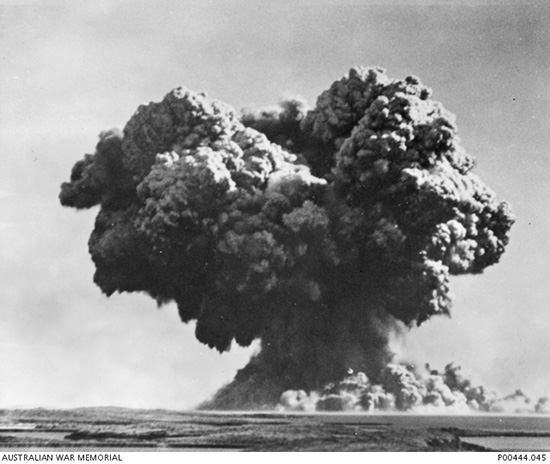 Britain's first atomic weapon is detonated at Monte Bello Islands, 3 October 1952 (Australian War Memorial, Wikimedia Commons)
Britain's first atomic weapon is detonated at Monte Bello Islands, 3 October 1952 (Australian War Memorial, Wikimedia Commons)
The Western Australian’s editorial assertions that ‘the Monte Bello explosion reverberates with a vastly increased assurance of British Commonwealth power and defensive security’ began to sound a little hollow. Public murmurings over the scale of these experiments did not, however, encourage British prudence. Rather, they moved their activities to Emu Field and then Maralinga, becoming even more secretive and devious. They continued nuclear testing under the guise of ‘minor trials’, probably in direct violation of the Geneva Convention’s moratorium on the testing of nuclear weapons, with little concern for the health of their own or Australian participants.
The fact that the area included significant Indigenous archaeological sites, described by some as an ‘Aboriginal Stone Henge’, did not give any concern. Issues of Aboriginal health or land rights were barely acknowledged, and the fact that some of the land fell on an Aboriginal reserve seemed to be convenient rather than an impediment.
Despite the impressive mushroom clouds of the Monte Bello tests, it was the so-called ‘minor trials’ at Maralinga that did the most damage. ‘They left behind by far the biggest portion of the radioactive contamination in Australia and were the subject of an active cover-up by the British,’ says Tynan. Paltry efforts to ‘clean-up’ made the contamination worse, scattering radioactive particles across the landscape. Efforts to keep people out of barely acknowledged danger were minimal. These trials could have been done in Britain, but would have faced stiff political opposition and far greater regulation
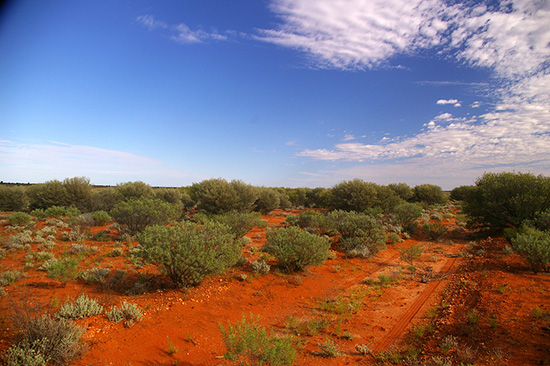 Former British nuclear test site, Maralinga, South Australia (photogrpah by Wayne England, Flickr)
Former British nuclear test site, Maralinga, South Australia (photogrpah by Wayne England, Flickr)
Tynan has brought together a vast array of detail in this book. Rather like the plutonium scattered at Maralinga, the most powerful material is not concentrated in a single blast but is scattered liberally throughout the book. The sheer breadth of the story is astonishing: the barefaced duplicity of the British, the naïve sycophancy of the Australian government, the trusting complacency of the public and the ineffectual scrutiny by the media. This book is a timely reminder of the importance of active and engaged public debate in a democracy, and one that every Australian should read.



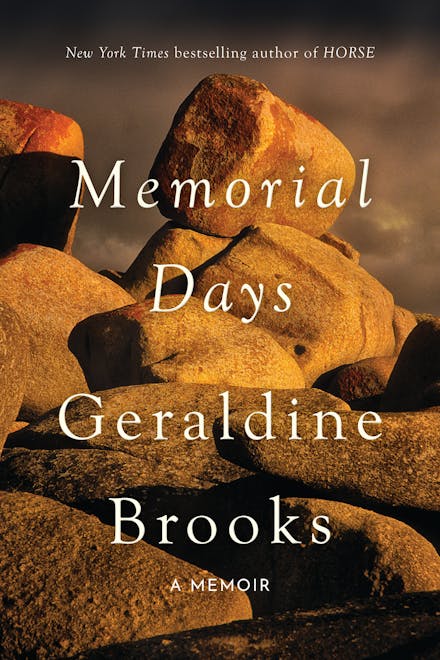


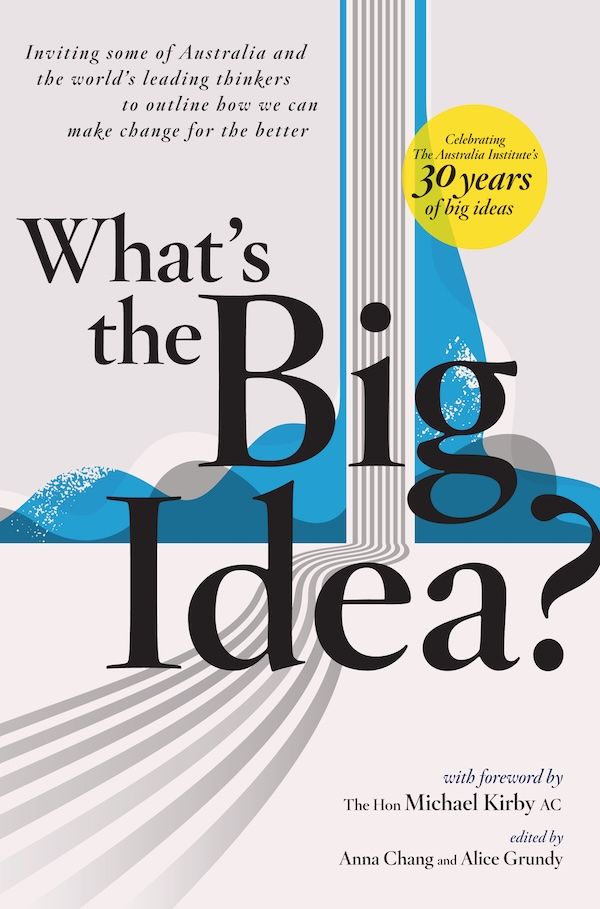
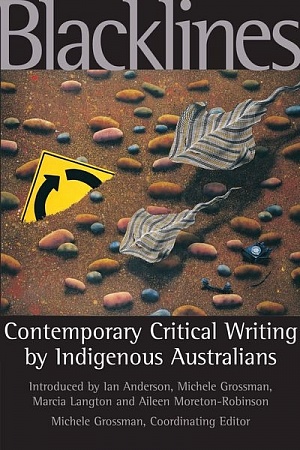
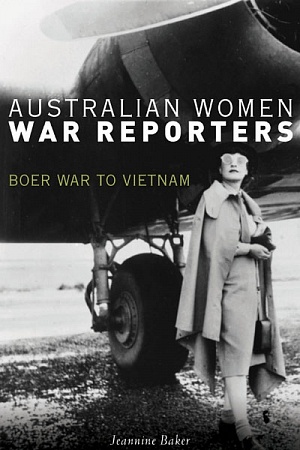





Comments (2)
Leave a comment
If you are an ABR subscriber, you will need to sign in to post a comment.
If you have forgotten your sign in details, or if you receive an error message when trying to submit your comment, please email your comment (and the name of the article to which it relates) to ABR Comments. We will review your comment and, subject to approval, we will post it under your name.
Please note that all comments must be approved by ABR and comply with our Terms & Conditions.